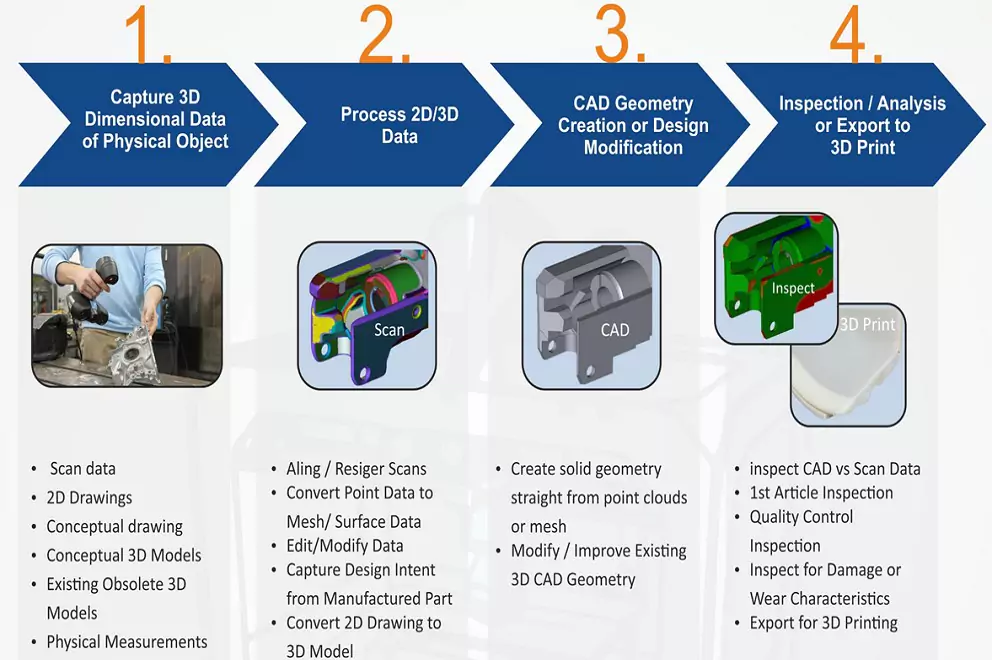If you need to make manufacturing design changes, but don’t have parts data and documentation, Laser Design’s on-site or in-lab reverse engineering services can help.
Reverse engineering using 3D scan data is the most efficient & effective way to generate a CAD model from a physical object that has any kind of complex or free-form shape. While using traditional measurement techniques such as calipers to reverse engineer these complex surfaces can be difficult or even impossible, 3D scanning shines – literally! Scan data can be turned into a model representing its as-built shape or to match original as-designed features – including parametric ones.
- Get the CAD data that captures an object’s original design intent
- Design a new part to fit a legacy part
- Accurately model powered surfaces
- Update CAD models of your tooling to match shop-floor changes
- Redesign a part without manufacturing defects
- Modernize your manufacturing process
- Time and resource savers – giving you a huge marketing advantage
- Usable in engineering, structure building, BIM and other types of projects for faster prototyping
- Useful for retrofitting, reverse engineering and various types of simulations
- Reverse engineering services make simulations and physical calculations much easier
Common reasons for reverse engineering:
- To make a part or other item cheaper
- Replicate a one-of-a-kind part
- Analyze a competitor’s product
- Create machining drawings for a handmade prototype
- Create a nominal model to be compared against for inspection
- Make changes and improvements to a product’s design
- Preserve and document handmade molds & obsolete parts
- Blueprint parts for government certification
- Create the mold for a part
Because of the high-quality models produced during the reverse engineering process, the models happen to be very versatile. Among the many things that are possible:
- Machining & molding
- 3D printing
- Making changes to the design
- Patent drawings
- Exploded 3D visualizations and animations
- Comparisons with other parts or scans
- Can be used to design mating parts or packaging
- Drawings can be sent overseas for manufacturing instead of the part
Alternatively, you can just keep the 3D model for safekeeping as documentation for future reference knowing, should the part ever be lost or destroyed, that you have sufficient information build another one. The sky is the limit as to what you can do once the object is in its digital form.
Being a leading reverse engineering service providing company, we believe in providing quality services within quick turnaround time. This is possible by making use of a streamlined and systematic process. The key steps involved in our process are –

